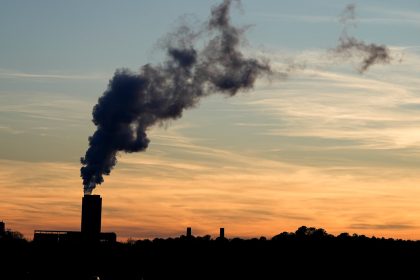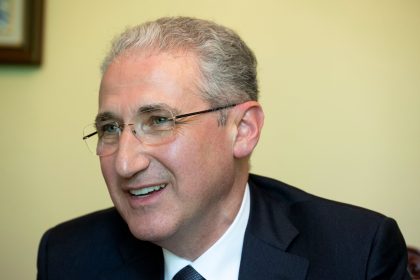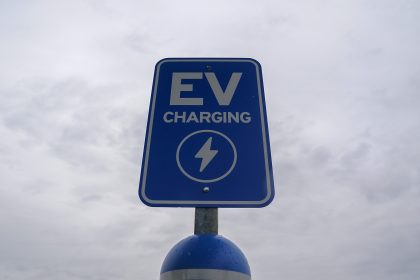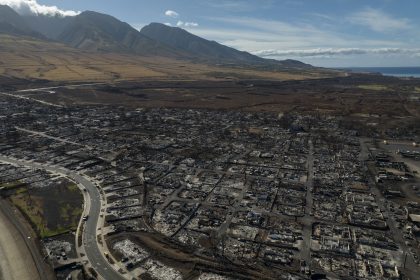Western States Face First Federal Water Cuts
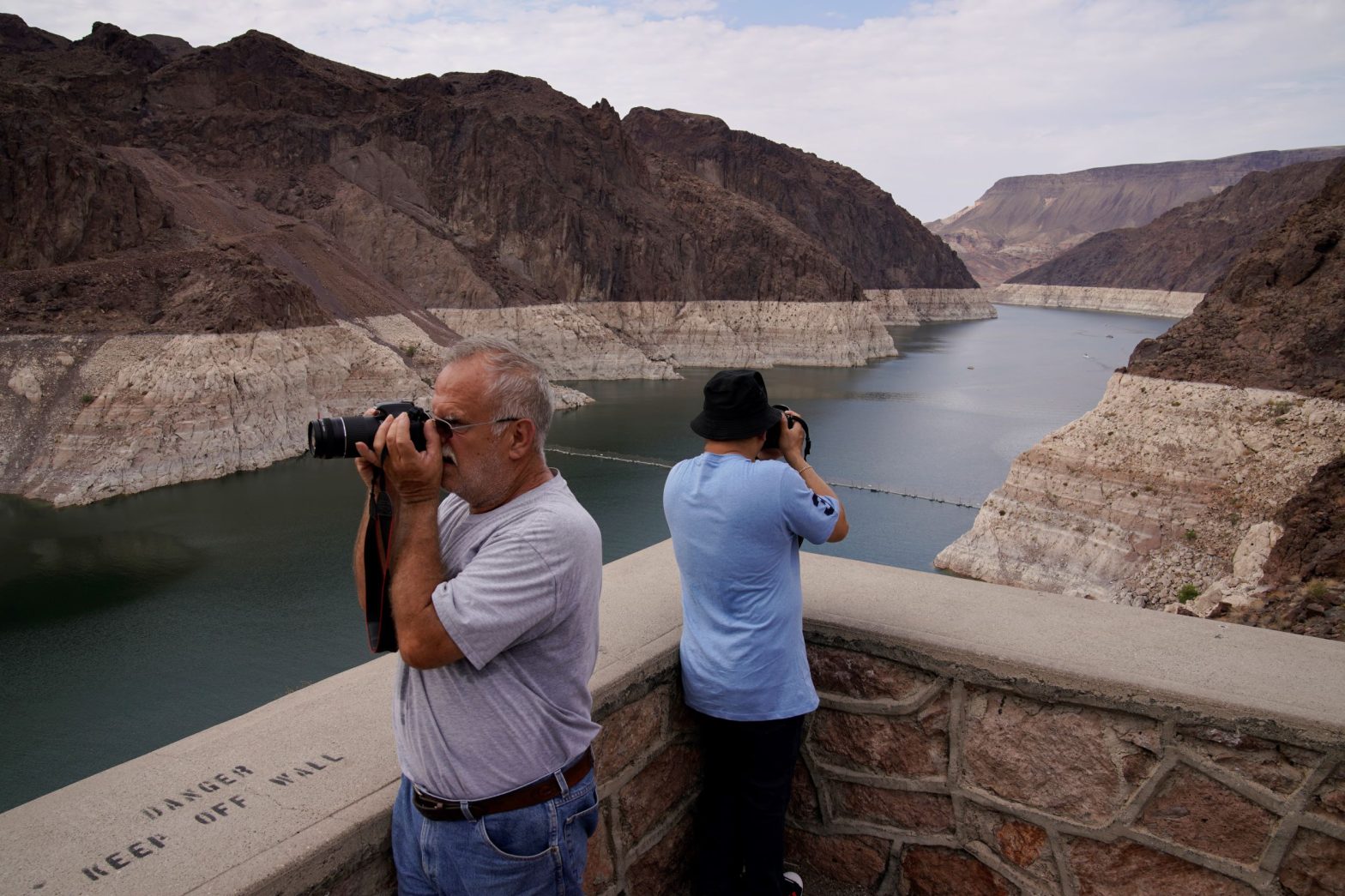
Federal regulators on Monday declared the first-ever water shortage at Lake Mead, a reservoir that feeds into the Colorado River and serves approximately 40 million people in the West.
The declaration, issued as part of an outlook for the river for the next 24 months, triggers cuts in water supply that will mostly affect Arizona farmers in the near term. Beginning next year they will be cut off from about 18% of the water they have relied on for decades.
Smaller, but still significant curtailments of water headed to Nevada (7%) and Mexico, across the southern border from the U.S. (5%), have also been ordered.
However, longer term, more than 40 million people who rely on Lake Mead and the Colorado River, will see at least part of their traditional water supply held back as a warming climate continues to reduce water flows into each.
In a written statement, the Bureau of Reclamation, an agency of the Interior Department, explained that most of the flow of the Colorado River originates in the upper portions of the river basin in the Rocky Mountains, an area that experienced an exceptionally dry spring in 2021.
The bureau says that from April through July, runoff into Lake Powell, another reservoir on the river, totaled just 26% of average despite near-average snowfall last winter.
The amount that would have flowed to Lake Mead without the benefit of storage behind Glen Canyon Dam — is approximately 32% of average. Total Colorado River system storage today is 40% of capacity, down from 49% at this time last year, the agency said.
“Like much of the West, and across our connected basins, the Colorado River is facing unprecedented and accelerating challenges,” said Assistant Secretary for Water and Science Tanya Trujillo.
“The only way to address these challenges and climate change is to utilize the best available science and to work cooperatively across the landscapes and communities that rely on the Colorado River. That is precisely the focus of the White House Interagency Drought Working Group—a multi-agency partnership created to collaborate with states, tribes, farmers and communities impacted by drought and climate change to build and enhance regional resilience,” Trujillo said.
Given ongoing historic drought and low runoff conditions in the Colorado River Basin, the bureau said downstream releases from Glen Canyon Dam and Hoover Dam will be reduced in 2022 due to declining reservoir levels.
In the Lower Basin the reductions represent the first ‘shortage’ declaration—demonstrating the severity of the drought and low reservoir conditions, the bureau said.
“Today’s announcement [regarding Lake Mead] underscores the value of the collaborative agreements we have in place with the seven basin states, tribes, water users and Mexico in the management of water in the Colorado River Basin,” said Reclamation Deputy Commissioner Camille Touton.
“While these agreements and actions have reduced the risk, we have not eliminated the potential for continued decline of these critically important reservoirs. Reclamation is committed to working with all of our partners in the basin and with Mexico in continuing to implement these agreements and the ongoing work ahead,” Touton said.
The Bureau of Reclamation forecast shows Lake Mead, the huge reservoir near Las Vegas, would drop to a level of 1,066 feet above sea level later this year. It hasn’t seen a level that low since it began to fill after the completion of Hoover Dam in the 1930s. The lake will be at 34% of capacity.
States, cities, farmers and others have diversified their water sources over the years, helping soften the blow of the upcoming cuts.
But federal officials said Monday’s declaration makes clear that conditions have intensified faster than scientists predicted in 2019, when some states in the Colorado River basin agreed to give up shares of water to maintain levels at Lake Mead if necessary.
Named after Elwood Mead, who was the commissioner of the Bureau of Reclamation, when the massive water project was planned, Lake Mead was formed by building the Hoover Dam in the 1930s.
It is one of several man-made reservoirs that store water from the Colorado River, which supplies household water, irrigation for farms and hydropower to Arizona, California, Colorado, Nevada, New Mexico, Utah, Wyoming and parts of Mexico.
But water levels at Lake Mead and Lake Powell, the river’s two largest reservoirs, have been falling for years and faster than experts predicted. Scorching temperatures and less melting snow in the spring have reduced the amount of water flowing from the Rocky Mountains, where the river originates before it snakes 1,450 miles southwest and into the Gulf of California.
Water suppliers have planned for the shortage declaration by diversifying and conserving their water supply, such as by storing water in underground basins. Still, water cuts make it harder to plan for the future.
In response to the bureau’s decision, the Central Arizona Project, which supplies water to Arizona’s major cities, will no longer bank river water or replenish some groundwater systems next year because of the cuts.
Officials of the Arizona Department of Water Resources, meanwhile, said during a Zoom meeting with reporters that they’ve already begun to meet to discuss options with representatives of California and Nevada.
While they haven’t yet determined exactly what additional actions they may take, possible steps include reducing the amounts taken from Lake Mead and conserving water in the reservoir.
“The tools we have to achieve the goal are conserving more water in Lake Mead and reducing water use,” said Tom Buschatzke, director of the Arizona Department of Water Resources. “This is a serious turn of events, not a crisis.
“To my partners, the basin states, the tribes, other water users and non-governmental organizations, the challenge before us … will be daunting. But we can and will address these issues and be successful together in partnership,” Buschatzke added.
Representatives of Nevada and California have expressed a willingness to cooperate.
But a coalition of conservation advocates responded to the announcement saying the federal government needs to do more to address unsustainable water use and work toward solutions.
“There is no climate plan for the Colorado River,” Zach Frankel, executive director of the conservation group Utah Rivers Council, said during a streaming news conference with other members of the coalition.
“We need a climate plan for the Colorado River and we needed it five years ago,” Frankel said. “The Bureau of Reclamation must do more than simply sit back and watch the system crash.”
The Associated Press contributed to this report.



















